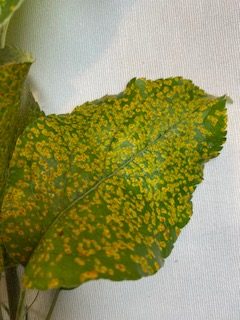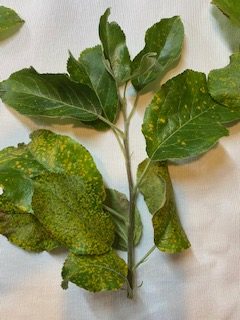
Mid-June is here and we are marching towards July, with knee high by July 4th. That is still the benchmark from being on or ahead of schedule for corn development in the Midwest. When growers were going full bore planting corn and beans it seemed the crop was going to be far ahead of schedule. When it cooled down and we were back to wearing winter jackets in May we began to wonder if being so early was a good thing, especially when a major freeze event almost became a reality with temps in the mid-20s in parts of the state. Now with the heat having turned on for two weeks the plants in many fields are getting ready to close the rows. The beans still have to play catchup as there are not many V4 beans in the state as of June 13th.
And for the latest crazy event in the year 2020 we have the Hell’s Angels and Matador Motorcycle Gangs heading to Seattle to clear up a few things with the crazies camped out in Seattle. In their history the Angels tend not to play nice when they go into an area. Now it appears they and the police may be on the same side in trying to evict the squatters.
For those interested in the facts, a list of the 200 major corporations who financially support Antifa has just been published. The names on the list surprised me.
The Markets
At this point there are U.S. raised beans headed to China as they have been buying our beans from the 2019 and 2020 crop. Reports from that country tell of dry weather trimming their yields by unknown amounts. The same may be true for regions in Brazil and Argentina and question remain as to the number of bushels they have for sale at this time.
While a few areas in the Midwest have just completed planting their corn and bean crops for the first time, or replanting both due to being too wet or cold, we also have pockets of serious dryness developing in the SW and High Plains. That dryness is a normal occurrence a bit later in the season, but a number of states like KS and OK have had an unusually high amount of rain the last two seasons. What they think is abnormally dry may be closer to the norm.
Dicamba
Debates on what the ban on Dicamba means as to buying, selling, paying, distributing, delivering and applying the product is ongoing. States are interpreting the ruling differently and waiting for the EPA to make their rulings. Govt agencies generally don’t like being told they screwed up and kowtowed too much to companies they are supposed to govern. Why should they have a say in this matter? In recent years these liaisons and malfeasance have been uncovered which is not conducive to building confidence in their actions.
In many states the deadline for applying Dicamba to SB was June 20 th . Temps above 85 F create conditions where air inversions are more common. This temperature rule is in place in several states. Growers have asked if any old studies were conducted to determine the yield effects of drift by 2,4-D or Banvel into a bean field would be. One great trial was done at the Waseca Station with the U of MN 35 years ago. They tested varying rates of the two products applied at stated stages of growth, then rated the damage and took each to yield. 2,4-D damaged beans, but did not affect yields much at low to medium rates. Banvel was much more active and irreparably damaged bean plants.
In Purdue’s weekly IPM Newsletter the alternative products to use on Dicamba and their efficacy on different weeds are given and discussed. The negative reactions to this ruling become greater as one migrates to areas where Palmer Amaranth is a problem. Their 10’ height, 9’ spread, and huge seed production potential was likely the allure to the Dicamba program. So far the Bader peach farm lawsuit has garnered the most publicity about the vapor drift problem. There are also vineyard owners and cotton farmers in Texas who have not been compensated for Dicamba particle and vapor damage drift. Realize that there are commercial and private applicator who took all precautions against drift and did so successfully. They were still at risk of having inversion caused drift, which can spook them.
A question for seed companies is how far they bought into the Dicamba creed and genetics. Did they keep a portion of their breeding program conventional or convert all of their germplasm to the new Extend trait? Did they maintain non-Extend breeding lines so they could reverse course? Some did not. Farmers will be asking about this and evaluating which firms now have to offer this yield drag.
Plant Health
Should step #1 in crop health be with choosing a particular fungicide or addressing nutrient needs? There are two schools of thought, just as there are in human health. If your corn and bean crops look great and your goal is to minimize your cost per bushel of grain produced, your thoughts should shift to ‘how do you keep your plants as healthy as possible?’. Sound mineral nutrition has to be emphasized as simply applying a fungicide to kill a fungus that developed due to low Mn or low Cu levels does not solve the underlying deficiency.
We are working with two new products this year, one from Brazil and one from Germany. The Brazilian company has a mineral/phosphite/AA mix called Impulse that optimizes mineral nutrition and involves a chain reaction that keep fungi at bay for the entire season. This can eliminate that expensive late season application while also suppling essential nutrients that most plants are lacking in an N-P-K only program.
A second product is from a company called Phytobiotics, headquartered in Germany. I was blessed with the chance to test it. We have about 60 fruit trees at our farm. Because the old windbreak contains cedar trees, which harbor a serious apple tree pathogen that releases spores in huge volumes in the spring, the trees were at risk of infection. By June 6 th the leaves were yellowed with lesions and pustules ready to erupt. I sprayed them with their newer copper based product with an AA chelator and made my observation on Saturday June 13 th . What I saw was that the pustules collapsed, the leaves regained their green color and the newly emerging leaves were clean. Now we have to observe and test the length of residual. Look at the leaf pictures of before and after.


Where this may find an immediate benefit from its availability is that in recent years many of our young thru older established trees on farmsteads and in town have been infected with unidentified fungi and go into a fast decline. The decline has sometimes been fatal, as two of my native hackberry trees need to come down due to many limbs having died. Now this company offers a systemic, effective, affordable, low volume, and longer residual disease management product. We are looking to test their Zn, Mn and Fe products yet. The turf grass industry, veggie and horticulture industry could also benefit.from its use.
What Else to Be Vigilant About
Japanese beetles are expected to be showing up shortly. The young survive in the soil as large, white curled up grubs that feed on grass roots. The best way to manage them may be to set up lured traps from Trece on the edges or corners of your property. Keep tabs on what they are feeding on that day and if you value that crop or plant be ready to spray. The best program I have heard about is to apply the BB 2.5 or SPE 120 Beauveria bassiana on the grassy areas the year before to build a population of fungi that will feed on the larvae.
The first gall midge flies to have been caught in a trap in Cass County, Nebraska indicates their emergence has begun. This insect is now found in NE, SD, IA and MN bean fields and is enlarging its range. The western most three of four rows of counties in Iowa now host populations. A few fields west of Atlantic in SW Iowa were found to have large populations where a high % of the bean plants were lodged and could not be harvested. Yield loss estimates were 35 to 40 Bu/A. Currently Justin McMehan is the entomologist at the U of NE who is heading up an extensive cooperative study where they are trying to generate ten year worth of information on the insect in two or three seasons. Erin Hodgson at ISU is involved in that study.
Knowing insecticides quite well and learning about the midge, there are two possible treatment programs. When planting beans back into fields where there was damage in past years or in neighboring fields I would recommend treating the seed destined to be planted around the field edges with the Beauveria. The insect tend to move in from the field margins. If no seed treatment with the Bb was made and no regular insecticide offers enough residual control, I would apply a ‘Chitinase’ based product. We have worked with Organisan Corp from Georgia a bit (as have colleagues in MN, ID, UT, ILL, WIS) who have treated crops being challenged by insects, pathogens and nematodes and used the ‘O2’, ‘O1YS’ or ‘Enhanced’ from them with good results. It’s an elicitor compound made from shrimp shells that causes soil microbes and plants to produce an enzyme called chitinase,that either repels or dissolves insects if they try to feed on the treated plants. Chinese chemists have been doing Chitinase research for centuries. In the past three years up to a dozen U.S. firms commercialized products using this science.
Purists who want to keep every field of corn managed as closely as possible may want to recognize that the common stalk borer larvae will be moving into the outside few rows of corn plants in the next two weeks. They are vulnerable to products applied to those rows.
Due to the cooler spring the appearance of the corn root worm larvae and accompanying feeding appears to be behind schedule. Rest assured they have not disappeared completely. Knowing that they have steadily outwitted most programs, products and traits we have used against them, we hope to see additional programs or products to become available to manage them. Might we see good results with the persistent nematodes from Cornell?
Bob Streit is an independent crop consultant and columnist for Farm News. He can be reached at (515) 709-0143 or www.CentralIowaAg.com.

